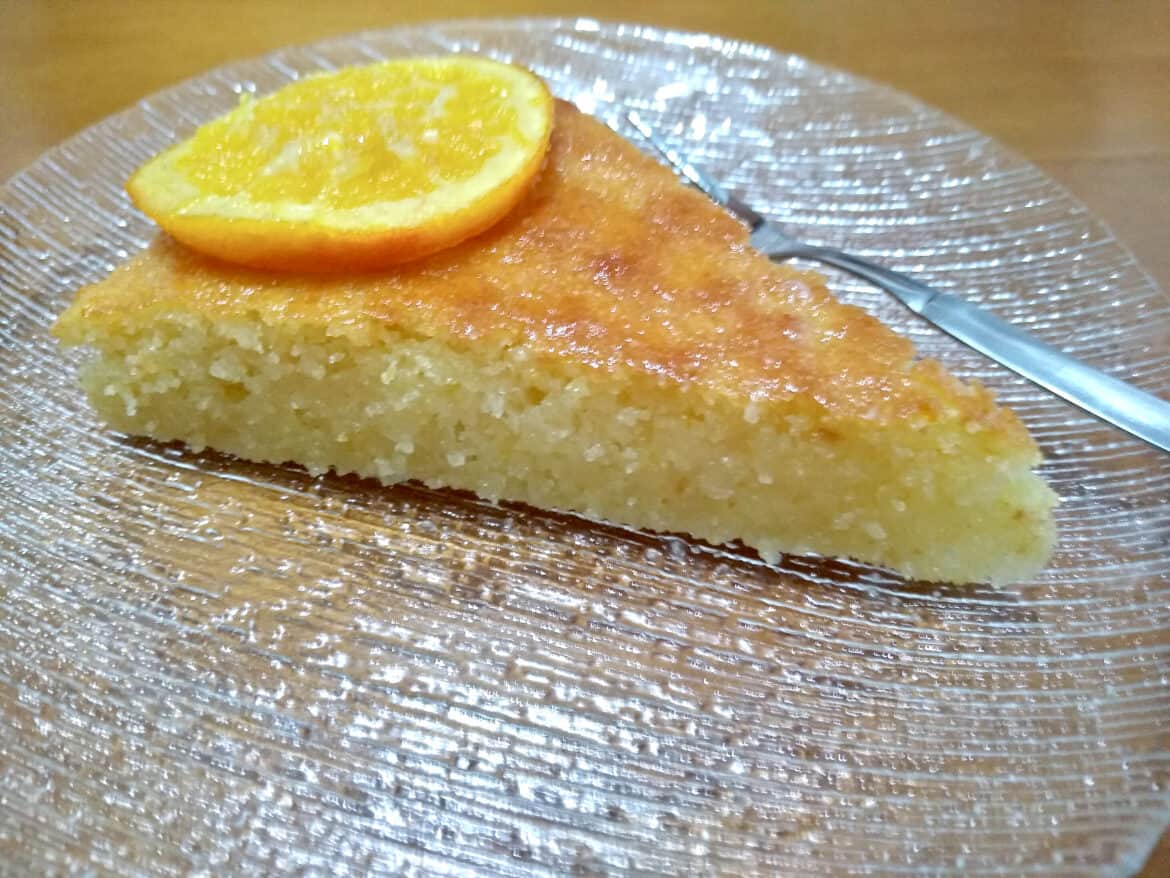Samali (Mastic flavoured Semolina Cake) is a traditional Greek dessert infused with Mastiha, a resin originating from the Mastic Tree in Chios and soaked in delicious syrup! So how to make your Samali the traditional way? I have included my very own decades old recipe that has never failed me.
 As a Greek I love cakes soaked in syrup. And I am not alone! they are so popular that even a term was invented to describe them. It is nothing else than Syropiasta or syrupy desserts! In Greek that translates to “desserts dunked in syrup”.
As a Greek I love cakes soaked in syrup. And I am not alone! they are so popular that even a term was invented to describe them. It is nothing else than Syropiasta or syrupy desserts! In Greek that translates to “desserts dunked in syrup”.
So what makes Samali different from any other cake? It boils down to three things. Firstly its the Mastic! Mastic is a resin obtained by the Mastic Tree which can only be found in Chios island. You may also hear people calling it ‘tear drops’ as it is found on the bark of the Mastic tree often forming tear drops.
What is mastic used for?
Mastic or mastiha (masticha) is a resin originating from the mastic tree in Chios island in Greece.Masticha (mastic) has a variety of uses from cooking, baking all the way to cosmetics. It started as a chewing gum with unique flavour and has ended up in many Greek desserts. Thus, you will come across various Greek desserts utilising mastiha such as Samali.
While in Greece Masticha is plentiful and easy to source, it can be a bit tricky to do so abroad. Your best bet is to check out a Greek deli and stock up.
What does mastic taste like?
Mastiha or mastic has such a unique taste that is quite difficult to describe. You will have to take my word for it and try it. Masticha has a semi-sweet, anise, licorice and pine like taste
How do you use mastic in food?
Mastic can be available in powder form, which is the form required for cooking. You can also find mastic in small chunks/ pieces. If you get these, then simply crush them with a pestle and mortar and turn them into powder.
What do I need to be careful when using mastic in cooking or baking?
Mastic has a unique taste elevating any baking project. The secret to using mastic is adding just the amount required from the recipe. Trying to add larger amounts of mastic to your cakes will have a disastrous effect. Mastic in large amounts will taste bitter, so please follow the instructions carefully.
How do you use mastic in food?
Mastic can be available in powder form, which is the form required for cooking. You can also find mastic in small chunks/ pieces. If you get these, then simply crush them with a pestle and mortar and turn them into powder.
What is the secret to a syrupy Samali (Mastic flavoured Semolina Cake)?
my little secret for the most fluffy Samali are the extended and repeated resting periods. Resting is crucial when preparing your Samali cake it allows semolina to absorb the liquid ingredients. In my recipe below I’ll take you through exactly how long and when to rest your Samali to achieve the perfect fluffy consistency!



2 comments
Recipes sound delicious but need them translated into english measurements. Please, love the recipes but cannot figure out the ingredients in engish. Thank you!
Dear Eleni,
Thank you for the feedback! I have added the measurements for this recipe. Hope you love it. I will be sure to add them in other recipes too!